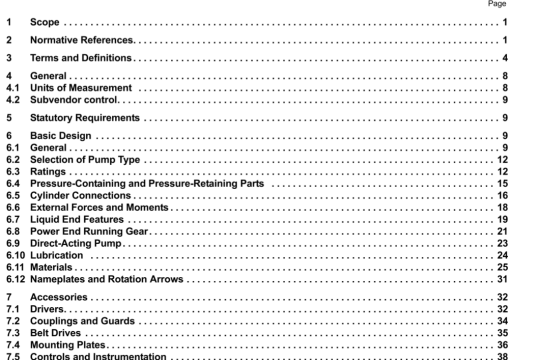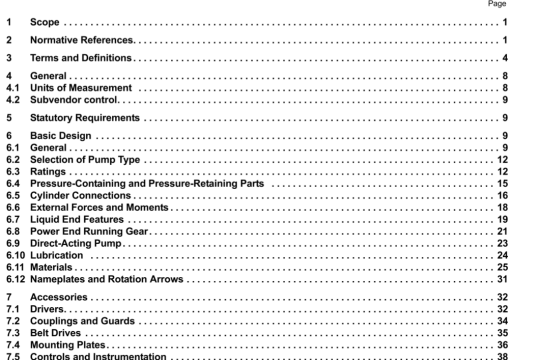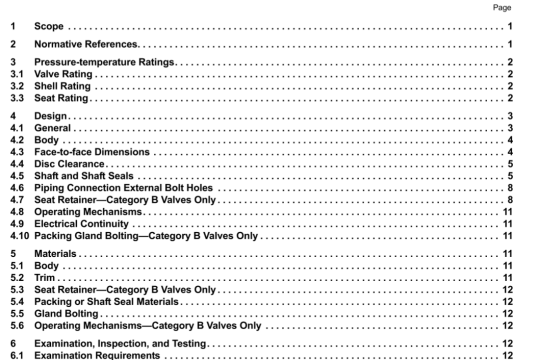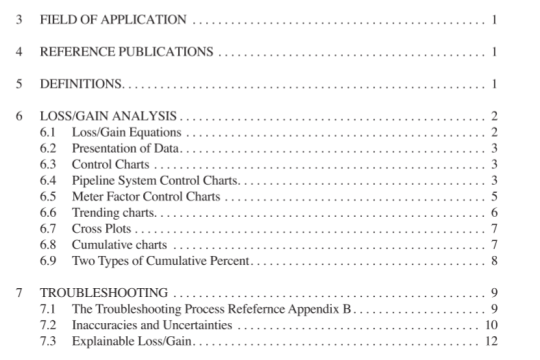API RP 534:2007 pdf download
API RP 534:2007 pdf download.Heat Recovery Steam Generators.
3 Watertube Heat Recovery Steam Generators
3.1 GENERAL
3.1.1 Typical System
lbe watertuhe I 11150 generates steam inside a number of tube circuits which are heated by a hot gas stream flowing through an enclosure of insulated steel casing plate.
The gas usually flows across the tubes in a single pass from inlet to outlet. In certain cases, baffles or directional vanes may be used to direct the gas across the tubes creating additional gas passes.
Steam generating tubes are cunnected to drums or headers. The tuba may be arranged in one continuous circuit or may be manifolded at (heir inlet and outlet ends to font a number of parallel flow paths.
Steam drums may be either integral to the steam generating tube circuit or mounted remotely from the tubes. Additional tube circuits may be used for preheating fred water or superheating steam.
32 APPLICATION
The watertube HRSG is used to recover heat from low-pressure exhaust or flue gases. Some common applications in petroleum related faeilities are:
a. Heat recovery from combustion turbine exhaust pa or use in prucess(es). in enhanced oil recovery and in cugeneration.
b. Heat recovery front fired heater flue gas.
e. Heat recovery Irom fluid catalytic cracking regenerator flue gas.
The casing should be designed with tight joints, seal welded, to prevent leakage of the gas to the atmosphere. Some minor leakage may occur at casing penetrations where thermal growth must be accommodated
32.1 Horizontal Tube Evaporator
The flow within a horizontal tube evaporator normally may be forced circulation as described in Appendix B. and Figures 14 and 15. The steam drum is mounted remotely from the tuba.
Ii is possible to establish natural circulation through horizontal tubes by elevating the water outlet from the steam drum sumciently above the tubes for operating pressures less than about 12.44)0 kPa(a)(l.X00 psia). however, hydraulic resistance and vapor blanketing in the tubes are potential problems. Forced circulation flow has generally been preferred for horizontal tubes historically.
32.2 VertIcal Tube Evaporator
The flow within a vemcal tube evaporator normally is natural circulation as described in Appendix B. and Figures t6 and 17. Downcomers may be external to the gas stream connecting the upper drum and lower drum. Downcomcrs can also be located within the gas stream. Circulation rates must consider heat input to an internal downcomcr.
32.3 Inclined Tube Evaporator
The Ilow within inclined tube evaporator arrangements is from a lower drum or header upward through parallel inclined tubes to a collector drum, header or the steam drum. Natural circulation is utilized, similar to that described for vertical tubes. The slope of the tubes and the contigurarion of the drums. headert, tubes and exhaust gas path is critical to proper operation of an inclined tube arrangement.
32.4 Pr.heat.rs, Economiz.rs and Supertwaters
In addition to the evaporatot the IIRSG may include an economizer section to heat the feed water and/or a superheater section for superheating steam (see Figures 14. 15. and I?). Multiple pressure level IIRSGs may have economizers or superheatcrs for more than one pressure level.
3.3.7 EconomIzer
The economizer will contain extended swface tubes. Exact configuration and combinations depend upon meeting IIRSG design requirements.
Economizer coils should be cosnplclcly drainable.
Pmcedurc tar replacing any economizer tubes, and for replacing the entire economizer should be dctcnnined dunng thc design phase.
The approach temperature shouid be large enough to preclude economizer steaming for all on-line operating conditions, including low gas turbine loads or no-duct-fuing conditions. In the event that start-up or other operating conditions result in a steaming economizer. the steaming condition must not impair required steam quality cause vapor lock, cause HRSG damage or otherwise impair HRS( operation. l)esign rnitiganon possibilitics fur economizer steaming may include economizer header vent valvcs, bypass alscs, or rccin2uiation. Coil damage, water hammer. etc. can occur if an economizer is nc* properly designed for steaming. The possibility of steaming in an economizer should be cvaluatcd fur various oIl-design conditions including combustion turbine pan load. supplemental firing variations, single v. multiple HRS(J operation (if applicable). and floating outlet pressure variations
3.3.8 Other Heat Transfer Service5
In order to increase the energy recovery of an 1-IRSU additional types of heat transfer services are sometimes provided. Thcsc may include such things as feed water heaters, fuel gas preheaters. rcfinay process coils. etc.
3.3.9 Cleaning Provisions
3.3.9.1 Methods of Cleaning
• On-line mehsmwaj cleaning. This form of cleaning is perfumed with the generator in steam production and is typically used for outside tube cleaning. On-line mechanical cleaning typically includes methods such as sc-ioth4owing and acoustics.
• 0jJ line mrcl,wrical c-leaning. This form of cleaning is performed with the generator idle and is typically used for outside tube cleaning. Otl.line mechanical cleaning typically includes meihosh such as scraping or power blasting
• Chemicalckaning. Typically, this form of cleaning is performed with the generator idle or in limited production and targets the inside of the Lubc.
Fill and d,ain meikod. The coils arc tilled and vented with a reactive chemical. After a reaction period. the solution is drained. Additional till and drain cycles arc used until the tubes are acceptably clean.
Cinidwion methcrd. Circulation is started after the coils are tilled with a reactive chemical. The strength of the solution is monitored and augmented and’or drained to maintain reactivity until the tubes are acceptably clean.




